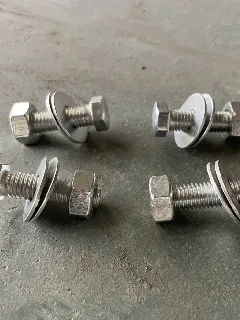loading...
- No. 9, Xingyuan South Street, Dongwaihuan Road, Zaoqiang County, Hengshui, Hebei, China
- admin@zjcomposites.com
- +86 15097380338
- Welcome to visit our website!
Cost Analysis of FRP Grating Materials per Square Foot for Various Applications and Industries
Understanding the Cost of FRP Grating Per Square Foot
Fiberglass Reinforced Plastic (FRP) grating has emerged as a highly effective solution for a myriad of industrial and commercial applications, largely due to its durability, corrosion resistance, and lightweight nature. When it comes to project budgeting, one of the most critical factors to consider is the cost of FRP grating per square foot. This article will delve into the factors that influence this cost, the benefits of using FRP grating, and how to effectively calculate your overall expenses.
Factors Influencing FRP Grating Costs
1. Material Composition The type of resin used in the FRP grating significantly affects its price. Common materials include polyester, vinyl ester, and epoxy, each varying in quality and resistance properties. Epoxy, for example, tends to be more expensive due to its superior performance in harsh environments.
2. Load Capacity FRP grating comes in various configurations, designed to support different weight loads. Higher load-bearing capabilities often lead to increased material and manufacturing costs, making the price per square foot higher. It's essential to select a grating type that meets specific load requirements while balancing cost efficiencies.
3. Customization and Fabrication Standard grating panels typically have a straightforward pricing structure. However, if customization is required—such as specific dimensions or additional surface treatments (e.g., anti-slip features)—the cost per square foot can increase. Custom cut sizes or special fittings can add to the overall expenses.
4. Supplier and Location Different suppliers may offer varied pricing based on their market presence, manufacturing processes, and transportation costs. Additionally, geographic location can play a role, as shipping distances and regional demand for FRP products can influence pricing.
5. Quantity and Ordering Bulk purchasing can lead to significant savings. Many manufacturers offer discounts on large orders, which can lower the overall cost per square foot when planning extensive installations.
Benefits of FRP Grating
Investing in FRP grating comes with numerous advantages, justifying its cost
- Corrosion Resistance Unlike metal grating, FRP won't corrode when exposed to harsh chemicals, making it an excellent choice for chemical processing plants, wastewater treatment, and marine applications.
frp grating cost per square foot

- Lightweight and Easy to Handle The lightweight nature of FRP grating allows for easier installation and reduced labor costs. It can be easily transported and cut, which is a significant advantage on job sites.
- Low Maintenance Requirements FRP grating does not require painting or regular maintenance, further reducing long-term costs and time investments.
- Safety Features Many FRP gratings come with anti-slip surfaces, enhancing safety in environments prone to spills and moisture, thus potentially lowering liability costs.
Calculating Total Costs
To determine the cost of FRP grating per square foot for your specific project, consider all factors mentioned above
1. Identify Your Need Assess the load requirements and environmental conditions for your project to choose the appropriate type of FRP grating.
2. Get Quotes Reach out to multiple suppliers to obtain quotes based on your specifications, including both standard and customized options.
3. Factor in Installation Don’t forget to include installation costs in your budget. While FRP is generally easier to install, skilled labor still comes at a price.
4. Consider Lifecycle Costs Look beyond the initial purchase price. Evaluate the lifespan, maintenance requirements, and replacement cycles to get a comprehensive understanding of your overall investment.
In summary, while the cost of FRP grating per square foot can vary depending on several factors, its long-term benefits often outweigh its initial expenses. By understanding the marketplace and carefully calculating your needs, you can make an informed decision that maximizes both performance and cost-efficiency for your project.
-
Premium FRP Handrail for All ApplicationsNewsAug.29,2025
-
Low Maintenance FRP Mini Mesh Grating ProductsNewsAug.29,2025
-
Innovative FRP Square Tubes for Modern Industrial SolutionsNewsAug.29,2025
-
FRP Water Storage Tanks Wholesale Solutions for Bulk BuyersNewsAug.29,2025
-
FRP Molded Grating Solutions for Diverse Industrial ApplicationsNewsAug.29,2025
-
Construction Advancements Through FRP Pultruded ProfilesNewsAug.29,2025
-
Why Choose FRP Railings, Guardrails, and Handrail Systems?NewsAug.29,2025
